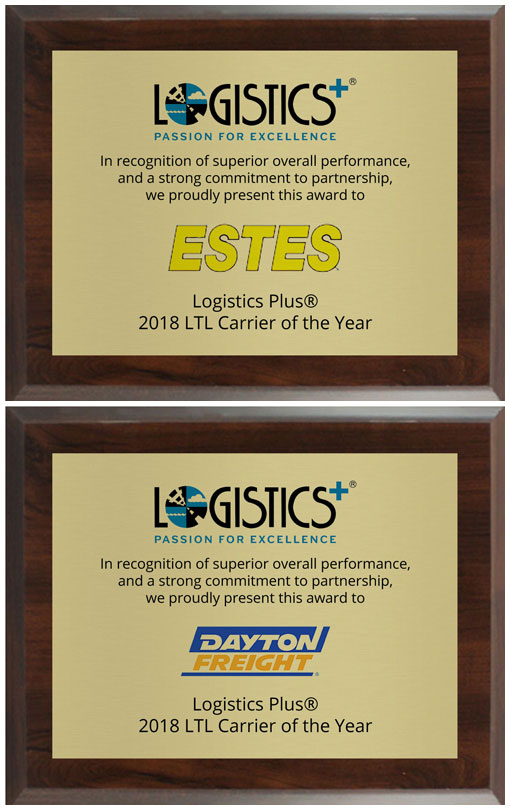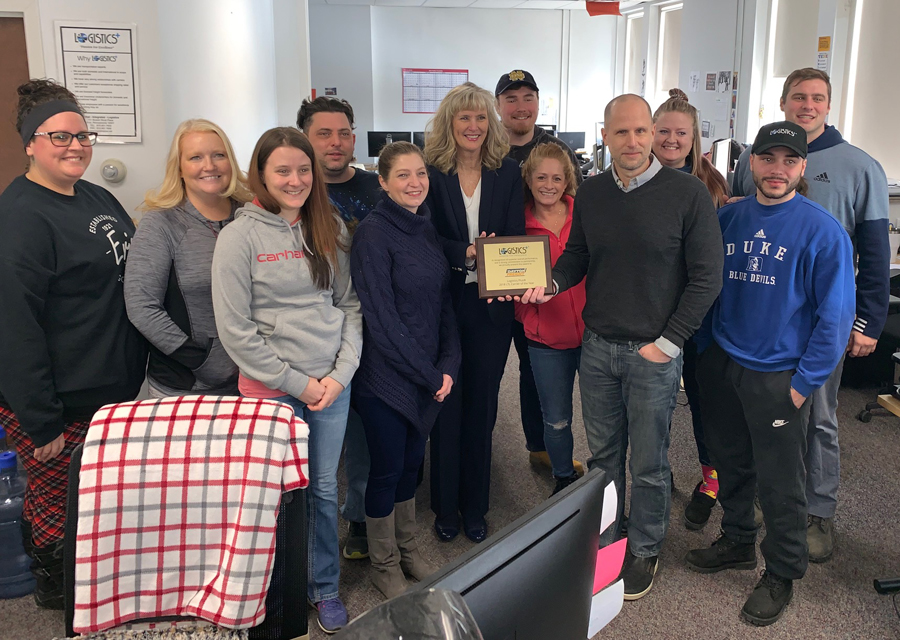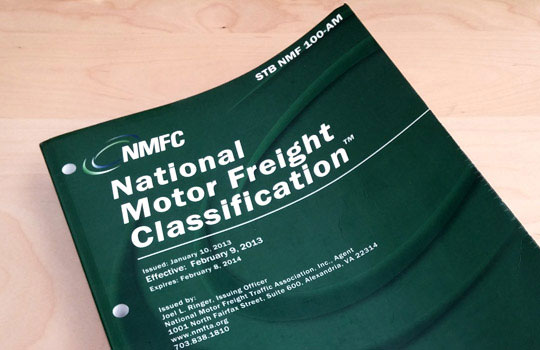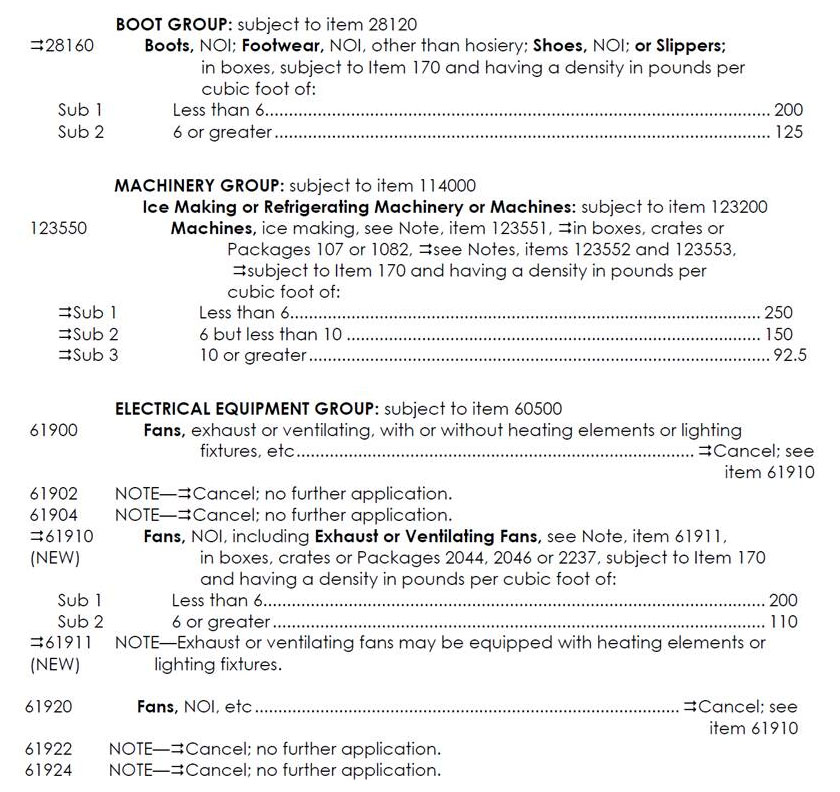
by logisticsplus | Mar 7, 2019 | News
FOR IMMEDIATE RELEASE
Logistics Plus Recognizes 2018 LTL Carriers of the Year
Estes Express earns national award; Dayton Freight receives regional award.
 ERIE, PA (March 7, 2019) – Logistics Plus Inc., a leading worldwide provider of transportation, logistics and supply chain solutions, recently recognized two of its less-than-truckload (LTL) carriers for superior results and performance in 2018. The annual awards were presented to the following carriers in each of two categories:
ERIE, PA (March 7, 2019) – Logistics Plus Inc., a leading worldwide provider of transportation, logistics and supply chain solutions, recently recognized two of its less-than-truckload (LTL) carriers for superior results and performance in 2018. The annual awards were presented to the following carriers in each of two categories:
- Estes Express was named the Logistics Plus National LTL Carrier of the Year (FedEx Freight was runner-up in the national category).
- Dayton Freight was named, for the third consecutive year, the Logistics Plus Regional LTL Carrier of the Year (Ward Transport & Logistics was runner-up in the regional category).
Logistics Plus, as a top North American freight brokerage firm, delivers LTL services through its proprietary eShipPlus™ transportation management system (TMS) – an online platform made available to all of its LTL customers and select freight agents. Its annual LTL carrier awards are based on an internal and external assessment of the following performance criteria:
- Annual Share of Business and Growth
- Price Competitiveness
- Service Performance
- Billing Accuracy
- Customer Service
- Account Representation
“2018 was a record year for Logistics Plus, and our LTL business segment was no exception,” said Scott Frederick, vice president of marketing and LTL carrier relations for Logistics Plus. “Despite a very challenging year from a capacity and rates standpoint, Estes Express and Dayton Freight both stepped up their games for Logistics Plus and our customers, and for that we are grateful. I am also thankful for the support we receive each-and-every day from all of our other LTL carrier partners; but for this past year, we especially thank and congratulate Estes and Dayton for their excellent performance.”
About Estes Express
Headquartered in Virginia, Estes is a leading, full-service freight transportation provider offering a complete range of shipping solutions including LTL, time-critical guaranteed, volume & truckload, global and custom solutions. Founded in 1931 by W.W. Estes and still family-owned, Estes is the largest privately held carrier in the nation. The company is now one of the most respected total-solutions providers in the industry with direct service throughout all of the U.S., Canada and Puerto Rico through more than 235 terminals, as well as service to and from Mexico and a global freight-forwarding service footprint.

Logistics Plus presents national LTL award to Estes Express representatives: Mark Watson, VP Transportation Intermediaries; Ric Spicer, Business Development Manager; and Bryan Krause, Manager of Rollouts and Special Projects.
About Dayton Freight
Founded in 1981, Dayton Freight is a private LTL freight carrier headquartered in Dayton, Ohio. With 54 Service Centers in the Midwest region, Dayton Freight offers shippers 1 or 2 day service to thousands of points throughout a 13 state area. With its Strategic Alliance Network, it can also serve all of the United States, Canada, Mexico, Puerto Rico and Guam.

Logistics Plus presents regional LTL award to Patty Ash, Corporate Account Manager for Dayton Freight.
About Logistics Plus Inc.
Logistics Plus Inc. provides freight transportation, warehousing, fulfillment, global logistics, business intelligence, technology, and supply chain management solutions through a worldwide network of talented and caring professionals. Founded in Erie, PA by local entrepreneur, Jim Berlin, 22 years ago, Logistics Plus is a fast-growing and award-winning transportation and logistics company. With a strong passion for excellence, its 450+ employees put the “plus” in logistics by doing the big things properly, and the countless little things, that together ensure complete customer satisfaction and success.
The Logistics Plus® network includes offices located in Erie, PA; Little Rock, AR; Los Angeles, CA; Riverside, CA; San Diego, CA; San Francisco, CA; Visalia, CA; Atlanta, GA; Chicago, IL; Detroit, MI; Lexington, NC; Buffalo, NY; New York, NY; Olean, NY; Akron, OH; Cleveland, OH; Charleston, SC; Nashville, TN; Dallas, TX; Fort Worth, TX; Houston, TX; Laredo, TX; Winchester, VA; Madison, WI; Australia; Bahrain; Belgium; Brazil; Canada; China; Colombia; Czech Republic; Egypt; France; Germany; Hong Kong; India; Indonesia; Kazakhstan; Kenya; Libya; Mexico; Netherlands; Poland; Saudi Arabia; Singapore; South Sudan; Taiwan; Turkey; UAE; Uganda; and United Kingdom; with additional agents around the world. For more information, visit www.logisticsplus.com or follow @LogisticsPlus on Twitter.
Media Contact:
Scott G. Frederick
Vice President, Marketing
Logistics Plus Inc.
(814) 240-6881
scott.frederick@logisticsplus.com
Click image below to download the Logistics Plus logo:


by logisticsplus | Feb 12, 2019 | News
 New England Motor Freight, Inc. (NEMF), the 19th largest less-than-truckload carrier in the United States, yesterday announced that the Company and ten related entities have voluntarily filed for relief under Chapter 11 of the Bankruptcy Code in the U.S. Bankruptcy Court for the District of New Jersey in Newark on February 11, 2019. NEMF intends to use these proceedings to facilitate an orderly wind-down of its operations.
New England Motor Freight, Inc. (NEMF), the 19th largest less-than-truckload carrier in the United States, yesterday announced that the Company and ten related entities have voluntarily filed for relief under Chapter 11 of the Bankruptcy Code in the U.S. Bankruptcy Court for the District of New Jersey in Newark on February 11, 2019. NEMF intends to use these proceedings to facilitate an orderly wind-down of its operations.
While industry watchers knew NEMF was having problems, no one had anticipated a bankruptcy filing and a subsequent shutdown. As a result of yesterday’s announcement, NEMF was removed as an LTL freight carrier option from the LogisticsPlus eShipPlus™ TMS, and we are recommending to our customers that no new shipments be tendered to NEMF at this time. If you have any current, undelivered shipments with NEMF through Logistics Plus, please contact us if you have any questions.
Additional Sources:
http://www.nemf.com/new-england-motor-freight-files-voluntary-chapter-11-petition/
https://www.wsj.com/articles/trucker-new-england-motor-freight-files-for-bankruptcy-plans-to-shut-down-11549928566
https://www.freightwaves.com/news/ltl-nemf-to-shit-down-after-filing


by logisticsplus | Dec 4, 2018 | News
 Please see the attached Disposition bulletin from the recent meeting of the Commodity Classification Standards Board. All subject items were approved as docketed or modified as reviewed by the CCSB with the exception to Subjects 5 and 6 which were deferred until the February 2019 meeting. The supplement with the changes to the NMFC will be published on November 29th, 2018 with an effective date of December 29th, 2018. Please review the entire disposition bulletin as many commodities have changed classification.
Please see the attached Disposition bulletin from the recent meeting of the Commodity Classification Standards Board. All subject items were approved as docketed or modified as reviewed by the CCSB with the exception to Subjects 5 and 6 which were deferred until the February 2019 meeting. The supplement with the changes to the NMFC will be published on November 29th, 2018 with an effective date of December 29th, 2018. Please review the entire disposition bulletin as many commodities have changed classification.
Among all of the changes, please make note the following changes for more common commodities that may impact many shipments/customers:
Subject 1: NMFC Item 28160; Boots, NOI, Footwear, NOI, other than hosiery, Shoes, NOI. Will change from a straight class 150 to a two-tier density break. Less than 6 pcf is class 200, 6 pcf or greater is class 125.
Subject 2: NMFC Item 123550; Machines, ice making. Will change from a straight class 92.5 to a three-tier density break. Less than 6 pcf is class 250, 6 but less than 10 pcf is class 150, 10 pcf or greater is class 92.5.
Subject 8: NMFC Items 61900; Fans, exhaust or ventilating and 61920; Fans, NOI are cancelled. New NMFC Item 61910 is created to encompass exhaust/ventilating fans and fans, NOI. This item will have a two-tier density break, less than 6 pcf is class 200, 6 pcf or greater is class 110.


by logisticsplus | Nov 2, 2018 | News
 North American Alert:
North American Alert:
Attn: LTL Shippers & eShipPlus Users,
Current events with UPS Freight is threatening to cause delays throughout the less-than-truckload (LTL) shipping industry across North America.
As previously communicated, UPS Freight and the Teamsters Freight National Bargaining Committee recently concluded a round of discussions on October 25, 2018. UPS Teamster employees will go to their local union hall to cast ballots between November 7-11, but, at this point, UPS does not have an extension in place to the current UPS Freight contract. As a precaution, so that customers don’t get caught with freight sitting on its docks should there be a labor strike, UPS Freight is temporarily suspending pickups until the new labor agreement is in place. As such, Logistics Plus has temporarily suspended UPS freight as an available option in eShipPlus until UPS confirms they have returned to normal operations.
Please be advised that the resulting influx of freight and shortage of capacity, on top of the already peak manufacturing and retail shipping seasons, is already starting to cause delays in pickups and transit with the other LTL carriers; and some carriers are warning that they may have to limit pickups in certain areas, especially at locations that they have not historically been servicing.
Please be advised that the team at Logistics Plus will work to keep all our customers’ freight moving despite these challenges. However, some pickup and delivery delays will be inevitable. We are asking all our customers to please add extra lead time to upcoming shipments until the situation has normalized. Please contact NADOPS (Logistics Plus North American Division) if you have any questions or to communicate any urgent situations or issues so our operations specialists can help provide the best solutions available.
Thank you for being a Logistics Plus customer. We appreciate your business and your patience as we work through this service disruption.


by logisticsplus | Jul 9, 2018 | News
 Less than truckload (LTL) shipping involves the transportation of relatively small freight shipments that can weigh anywhere between 150 to 10,000 pounds. LTL carriers collect freight from multiple shippers and consolidate that freight onto trailers before the delivery process begins. LTL shipments can be very confusing, because unlike Full Truck Load (FTL) shipments, LTL shipping rates are calculated from several varying factors. Knowing the factors that impact LTL shipping rates is helpful for creating more realistic rate expectations and increasing long-term savings. Here are the factors:
Less than truckload (LTL) shipping involves the transportation of relatively small freight shipments that can weigh anywhere between 150 to 10,000 pounds. LTL carriers collect freight from multiple shippers and consolidate that freight onto trailers before the delivery process begins. LTL shipments can be very confusing, because unlike Full Truck Load (FTL) shipments, LTL shipping rates are calculated from several varying factors. Knowing the factors that impact LTL shipping rates is helpful for creating more realistic rate expectations and increasing long-term savings. Here are the factors:
Weight & Density
Weight and density are the two most basic aspects of how LTL shipping rates are calculated. Typically, freight companies rate shipments at the lowest weight and category, meaning that the more a shipment weighs, the less it costs per hundred pounds. Furthermore, be sure to measure the longest sides of all packaging, including anything that overhangs. To determine the density of your shipment, the total weight of your shipment is divided by the total cubic feet. Logistics Plus offers a free, online freight density calculator to quickly determine the density of any shipment.
Freight Classification
Once density is calculated, you can now determine the proper freight classification. The National Motor Freight Traffic Association (NMFTA) established “freight classes” that are used to classify commodities for rating purposes. Classifications are based on a products density, stow-ability, value, handling and liability. Each commodity is categorized into one of 18 different freight classifications that range from 50 to 500. Generally, the lower the freight class, the more dense the commodity. Conversely, a higher freight classification represents a less dense product that typically takes up more space. As a general rule of thumb, the higher the freight class, the higher the rate will be. You can read more about freight classification on the Logistics Plus website.
Base Rates & Discounts
Every LTL carrier establishes their own base rates upon which they normally offer discounts. Base rates are typically quoted per 100 pounds, but can vary by company or by lane. One thing to make note of is that carriers will change their base rate depending on their need for additional volume and increased costs for lanes where they have a good balance between trucks and freight. It’s difficult to create an accurate comparison of LTL shipping rates just by looking at base prices or discounts because they’re almost always different. A lower discount off a lower base rate can actually be a better deal than a higher discount off a higher base rate. Logistics Plus can offer you a free freight analysis if you want to compare rates.
Minimum Charges
The absolute minimum charges refers to the minimum price a carrier will offer, and they will not go lower no matter the circumstances. In this case, even when discounts are negotiated, the absolute minimum charge still holds true. This minimum charge helps ensure that carriers cover all of their fixed costs for a specific shipment or lane. Understanding your carriers absolute minimum charge is an important factor to research, especially if you’re shipments are small and moving across short distances.
Origin & Destination
A shipment that needs to travel a further distance will tend to have higher rates than a short distance shipment. Shippers should be aware of which carriers serve their intended destination so that they can avoid additional charges or fees. It’s important to choose the correct carrier because if your shipment needs to be transferred to another LTL carrier, costs will rise and the goods will be more susceptible to damages.
Surcharges & Accessorial Fees
Accessorial fees apply when additional services are required to handle your shipment. These fees apply when the typical dock-to-dock pickup and delivery service most LTL carriers provide isn’t enough. Common examples of accessorial services include lift-gates, weekend deliveries, and pickup or delivery at special origins or destinations. Fuel surcharges are also a common accessorial fee that LTL carriers charge. Knowing how these additional fees impact your overall expenses is important when determining who you want to work with as your LTL carrier.
If you feel like you’re over-spending on LTL freight, or if you lack the expertise to negotiate your own rates, please consider working with Logistics Plus. As a top freight brokerage firm, our LTL experts help hundreds of companies save on their LTL shipping every day. Logistics Plus will ensure you get a quick and accurate LTL freight quote for any shipment.



 ERIE, PA (March 7, 2019) – Logistics Plus Inc., a leading worldwide provider of transportation, logistics and supply chain solutions, recently recognized two of its less-than-truckload (LTL) carriers for superior results and performance in 2018. The annual awards were presented to the following carriers in each of two categories:
ERIE, PA (March 7, 2019) – Logistics Plus Inc., a leading worldwide provider of transportation, logistics and supply chain solutions, recently recognized two of its less-than-truckload (LTL) carriers for superior results and performance in 2018. The annual awards were presented to the following carriers in each of two categories:








 Less than truckload (LTL) shipping involves the transportation of relatively small freight shipments that can weigh anywhere between 150 to 10,000 pounds. LTL carriers collect freight from multiple shippers and consolidate that freight onto trailers before the delivery process begins.
Less than truckload (LTL) shipping involves the transportation of relatively small freight shipments that can weigh anywhere between 150 to 10,000 pounds. LTL carriers collect freight from multiple shippers and consolidate that freight onto trailers before the delivery process begins. 
